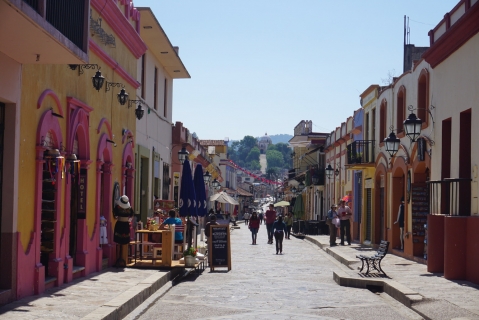Puerto 脕ngel Temperatures: Monthly Averages and Year-Round Insights
On this page, we鈥檒l explore Puerto 脕ngel鈥檚 temperature statistics in detail, including day and night variations and monthly averages. We鈥檒l also compare the annual temperature to other cities in Mexico.
Monthly Temperature Averages
The climate in Puerto 脕ngel remains fairly constant, offering comfortable temperatures throughout the year. Average maximum daytime temperatures reach a very warm 30掳C in April. In January, the coolest month of the year, temperatures drop to a warm 29掳C. At night, expect even cooler temperatures, with lows averaging around 23掳C.
The chart below illustrates the average maximum day and minimum night temperatures in Puerto 脕ngel by month:
The lowest temperatures typically occur between 4 AM and 6 AM, while the peak temperatures are generally observed around 3 PM, coinciding with the sun鈥檚 strongest heating effect. April, the city鈥檚 warmest month, enjoys 223 hours of sunshine.
The chart below shows the average temperature throughout the year:
January, the city鈥檚 coldest month, sees about 11 mm of rainfall spread over roughly 0 days. It records 245 hours of sunshine of sunshine.
Annual Temperatures in Mexico Compared
The map below shows the annual temperature across Mexico. You can also select the different months in case you are interested in a specific month.
 very warm
very warm
 warm
warm
 pleasant
pleasant
 moderate
moderate
 cold
cold
 very cold
very cold
Puerto 脕ngel Temperatures Compared World Wide
Puerto 脕ngel鈥檚 average annual maximum temperature is 29掳C. Let鈥檚 compare this with some popular tourist destinations:
The city of Rome, Italy, has an average annual temperature of 20掳C, known for its sunny summers and comfortable winters.
In Toronto, Canada, the average annual temperature is 13掳C, with snowy winters and warm summers.
Meanwhile, Buenos Aires, Argentina, enjoys a humid subtropical climate with an average annual temperature of 23掳C, featuring hot summers and mild winters.
In Tokyo, Japan, the average annual temperature is 21掳C, expect warmer summers and milder winters.
How are these Temperatures Measured?
Generally, temperature data depicting climate is usually given over a 30-year average in order to reduce short-term fluctuations and reveal better long-term trends in climate conditions.
This temperature data is taken from land-based thermometers, ocean buoys, ships, and satellites. These measurements are transmitted to weather stations and climate centers around the globe where they are processed, averaged, and analyzed in order to monitor the trends and create climate models.
Temperatures in the Mountains
Although not all regions have mountains, elevated areas exhibit distinct temperature variations.
- Sun Exposure: Sunlit slopes tend to be warmer, while shaded areas remain cooler.
- Altitude Effects: Temperatures drop by approximately 6掳C for every 1,000 meters of elevation, creating distinct microclimates.
For more detailed information about Puerto 脕ngel鈥檚 weather, including monthly rainfall, sunshine hours, and humidity levels, visit our Puerto 脕ngel climate page.
Current temperature in Puerto 脕ngel
broken clouds and no rain
clear and no rain
clear and no rain




